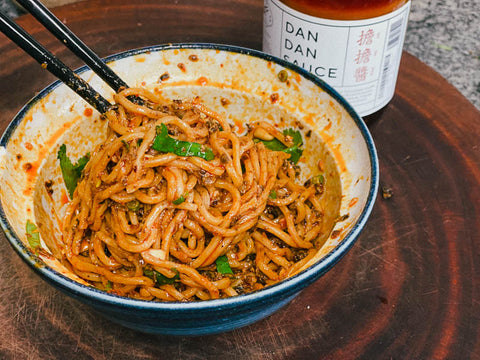Creating a bowl of super legit Dan Dan noodles couldn't be simpler with our Dan Dan Sauce. One of the most common questions we get when it comes to it, is what's the best noodle to use. Traditionally, medium sized round wheat noodles are used for Dan Dan noodles. Alternatively, we also love using flat noodles, knife cut noodles, rice noodles, and sometimes even pasta with our Dan Dan Sauce.

Image by dashu83 on Freepik

Ingredients
- noodles
- garlic
- scallion
- cilantro
- peanuts (crushed)
- Chinese Landry Dan Dan Sauce

To make the Dan Dan noodle, cook the noodles to the chewiness of your liking. Traditionally, it's served al dente. While cooking the noodles, mince a clove or five of raw garlic depending on how big of a garlic lover you are. In the jar, stir the Dan Dan sauce really well until all the components are mixed together. After straining and removing the cooked noodles from the boiling water, place freshly cooked noodles in a bowl straight away. Put spoonfuls of the sauce on the noodles, add the minced garlic, and mix the noodles, garlic, and sauce together until the noodles are well-coated. We usually use 2-3 spoonfuls per bowl of noodles.

Image by jcomp on Freepik
Toppings
Topping is where you can get real creative, but here are the basics for making a traditional bowl of Dan Dan Noodles - chopped scallion, cilantro, and crushed peanuts. You can also add some thinly sliced cucumbers, blanched leafy greens, our seasonal limited edition Sichuan Dirty Pickles, meat or plant-based proteins. Traditionally, Dan Dan noodles are made with minced beef stir fried to a slightly crispy texture. But that's for another day!

